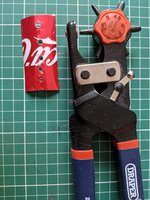Here's the story:
I have a razor with ivory scales, with a terrible blade.
I have another razor with a great blade...but terrible scales.
I want to take the blade from the damaged scales razor, and swap it out with the broken blade from the ivory scales.
Is there anyone (preferably in Australia?) who could do this for me? And what would it cost?
I have a razor with ivory scales, with a terrible blade.
I have another razor with a great blade...but terrible scales.
I want to take the blade from the damaged scales razor, and swap it out with the broken blade from the ivory scales.
Is there anyone (preferably in Australia?) who could do this for me? And what would it cost?


